
WAR, HEROISM & REVOLT
An exploration of Beethoven, Liszt, Janáček & Ravel by Phillip Sametz.
The theme Beethoven would use as the basis for the finale of his Eroica Symphony; a lament for fallen revolutionaries by Liszt; Janáček’s tribute to a countryman killed for his political beliefs; music by a composer whose life was changed by a genocidal government; and Ravel’s homage to those who were killed in action during WWI – themes of war, heroism and revolt run vividly through tonight’s recital by Kirill Gerstein.
The theme Beethoven would use as the basis for the finale of his Eroica Symphony; a lament for fallen revolutionaries by Liszt; Janáček’s tribute to a countryman killed for his political beliefs; music by a composer whose life was changed by a genocidal government; and Ravel’s homage to those who were killed in action during WWI – themes of war, heroism and revolt run vividly through tonight’s recital by Kirill Gerstein.
Beethoven loved the theme from which all else springs in his set of variations Op.35, and employed it gainfully in four separate works. In 1800, it formed the basis of the finale of his ballet music for The Creatures of Prometheus; a year later it became the seventh of his set of 12 Contredanses and in 1803, most famously, it appears as the main theme of the finale of his Eroica Symphony. Between the Contredanses and the symphony, it became the theme for these Op.35 variations. This masterful set begins teasingly with the introduction stated proudly and even, you might say, pedantically, before ruminations in the bass on the as yet unheard theme; this is a foretaste of the unconventional way in which Beethoven builds this intricately constructed edifice. Many of the variations explore the tension between melody and bass, most hilariously in the bagpipe drone of Variation IX, most futuristically in the pointillist opening bars of Variation X. After many short variations, Beethoven seems to expand time with the ruminative Variation XV, which leads straight into the grand and exhaustively inventive fugal finale.
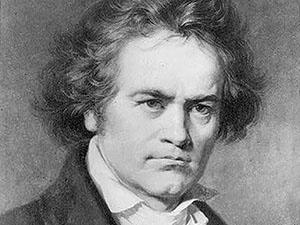
The final bars may seem brusque, but they also provide some of the many humorous moments in this multi-faceted work. The fourth movement of the Eroica Symphony constitutes a completely different set of variations, but the theme’s association with the symphony has often led to the Op.35 variations being nicknamed Eroica as well.
Liszt’s heroic vision in Eroica is as much about the performer as it is any abstract program, and also tells a story of Liszt the tireless perfectionist. He has sometimes been imagined as a fairly free-wheeling composer, who turned out rhapsodies and Liebestraum with uncommon ease. Yet he took some 25 years to create a version of the Transcendental Studies he regarded as final. The set, which began life as his Op.1 Study in 12 exercises when he was 15-years-old, was refined and expanded when Liszt was at the height of his fame as a touring virtuoso, in 1838; Liszt then revised it again in the early 1850s, by which time he had settled in Weimar as Kapellmeister and had left behind the world of public concert-giving at the piano. Reflecting in moderate tranquility – for he was still a busy man – he made the studies not perhaps any easier to play, but clearer in intent. As a set, they remain, in the words of writer Bryce Morrison, ‘a Himalayan rather than an Alpine challenge’. Liszt’s studies are grander and more rhetorical than Chopin’s, and Eroica – the seventh of the set – is a fine example, from its impassioned opening to the climax, in martial octaves, in which banners are fluttering and the scent of triumph is on the breeze.
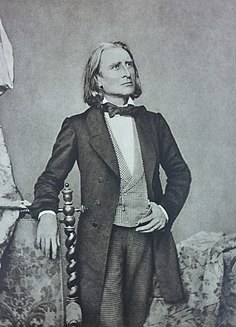
Eroica is in some ways the yang to the yin of Funérailles, a work which is also a reminder of Liszt the creator of the symphonic poem, in such works as Orpheus and Prometheus, for which he developed a supple technique he called Transformation of Themes; in this orchestral world, as Neville Cardus once put it, ‘form in music … [was] … shaped by the poetic or emotional content’. In Funérailles, Liszt brings this sense of freedom from classical forms to a kind of symphonic lament for solo piano – a lament for his compatriots who had fallen in the Hungarian Revolution of 1848-49; and a lament for Chopin, who died in 1849, and whose relationship with Liszt was complex and profound. The work conveys an overwhelming sense of sorrow, and mournful ceremony; the rawness of emotion, right up to the abruptness of the final bars, is Liszt at his most expressive and his least interested in musical convention. In the central section, he conjures up the oppressive sounds of cavalry hoof beats that he knew from Chopin’s Polonaise No.6.
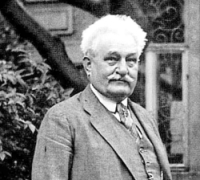
Political oppression lies at the heart of Janáček’s inspiration for From the Street. The sonata commemorates an incident that occurred on 1 October, 1905, when there were demonstrations in the streets of Janáček’s home town of Brno. Czech-speaking residents demanded a Czech-speaking university; the city’s German-speaking residents then staged a counter-protest and troops from the ruling Austro-Hungarian empire were sent in; on the steps of the Besední dům (now the home of the Brno Philharmonic), František Pavlík, a 20-year-old carpenter, was bayoneted to death.
From the Streets might have disappeared had it not been for pianist Ludmilla Tučková. She gave its first performance in 1906, but Janáček, feeling deeply insecure about the work, ripped out the pages of the final movement (a funeral march), and burned them. After the premiere he ripped up the remaining pages too, and threw them into the Vltava river. After Janáček had destroyed the finale, Tučková feared the worst, and secretly copied the first two movements. She did not tell Janáček of this until his 70th birthday, in 1926, at which point he agreed to have the work published as a two-movement sonata. The score, he said, ‘did not want to sink. The pages bulged and floated on the water like white swans.’ You might say, given the sonata’s subject matter, that it had an appropriately violent history.
This is a work of exceptional textural individuality, in which every bar is etched in precisely calibrated shades. Much of Janáček’s keyboard writing is vocal in character, and the music frequently emerges with the apparent spontaneity of an unexpected sob or exclamation. Janáček’s music is never easy to describe, but the writer and musicologist Guy Erismann came close in calling From the Streets ‘the inward theatre which transcends the frontiers of the heart to come out onto the public square’.
Janáček is a composer whose music is driven by powerful emotions; these can often lead to unexpected destinations. He had to wait until he was 62, and the belated Prague premiere of his opera Jenu˚fa in 1916, for the kind of acclaim for which he had long dreamed. In this same year, Komitas was in exile from his Armenian homeland, and creating the music you hear tonight.
Komitas began his extraordinary life in Turkey, as Solhomon Gevorgi Soghomonian. By the age of 12, he had lost both of his parents. He was given protection by an Armenian priest, travelled with him to Etchmiadzin Cathedral in the Armenian city of Vagarshapat and was, after a decade or so, ordained a monk. When he graduated from the seminary in 1894 he was named Komitas, after a 7th century poet and composer and, soon afterwards, obtained the degree of Vardapet, or doctor of theology. His subsequent studies at Berlin University included singing (he was by all accounts a fine baritone), philosophy and aesthetics, but the core of his achievements lay in his collecting of Armenian folk song, whether in Armenian, Turkish, Persian or Kurdish. He lectured widely, and own music was influenced profoundly by his immersion in the world of folk song. In the two dances Kirill Gerstein will perform this evening – from a set of seven Komitas created in 1916 – you will hear music which echoes the supple rhythms of native song, and although Komitas and Janáčekwere far apart geographically, in this respect the two men have much in common.
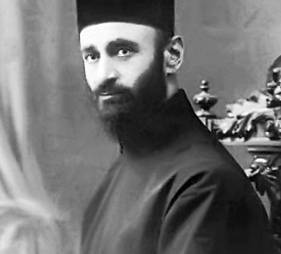
The title of each of Komitas’s seven dances include a reference to the music’s geographical source, and throughout the set, Komitas evokes the sounds of the folk instruments of Armenia; in Shushiki of Vagarshapat, specifically, the music suggests the timbres of the stringed instrument the tar, which is Iranian in origin but used widely in Armenia also.
Komitas’s story did not end well. In 1915, the Ottoman government began a program of ‘ethnic cleansing’ intended to rid the centre of their empire (now the Republic of Turkey) of Armenians. As a result, hundreds of thousands of Armenians were killed, and Komitas was nearly one of them. Thanks to his many influential supporters, he was released from prison, but his mental health deteriorated as a result of his ordeal and he was moved to a psychiatric hospital in Paris in 1919, where he died in 1935.
Stravinsky once said that ‘the musicians of my generation and I myself owe the most to Debussy,’ and in some ways Debussy was as revolutionary in the world of piano music, in his time, as Chopin had been 80 years earlier. Like Chopin, he re-invented pre-existing forms – studies, preludes – and created new worlds of piano music under seemingly generic titles – in Chopin’s case it was Impromptu or Scherzo, in Debussy’s Estampes or Images. His desire to create ever-shifting clouds of keyboard sound involved a vast and nuanced harmonic palette, and a new attitude to the use of the pedals.
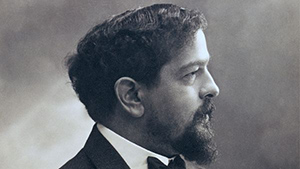
In Gerstein's Great Performer's program you hear two of his final musical thoughts for the piano. In fact the plaintive Élégie of 1916, with its sighing melody in the left hand, was, until recently, thought to be Debussy’s final piano work. However in 2001 a previously unknown piece surfaced, Les soirs illuminés par l’ardeur du charbon (Evenings Lit by the Burning Coals). It is, if you will forgive the pun, a glowing musical statement, with a fascinating story behind it. The winter of 1916-17 was particularly harsh and, due to the scarcities imposed by wartime conditions, coal was extremely hard to come by. Debussy’s resourceful coal merchant, Monsieur Tronquin, managed to find some for the composer, and in return Debussy gave him this work in manuscript.
This coda to Debussy’s keyboard legacy contains two echoes from his musical past. The title itself is a line from Le balcon, which Debussy had set in 1888 as one of his set of Five Poems of Charles Baudelaire; the work also contains fleeting reminiscences of the fourth of the Book One préludes, Les sons et les parfums tournent dans l’air du soir (The sounds and fragrances swirl through the evening air), a title itself taken from Baudelaire.
The First World War, and Ravel’s memories of and reflections on it, coloured the composer’s conception of Le tombeau de Couperin. He first mentions the work in correspondence in 1914, as a French Suite, but it was not until 1917 that this idea emerged fully as Le tombeau de Couperin. As Debussy’s short memory piece of nights by the fire, written in the same year, and also tinged by war, would be his final work created for solo piano, so Le tombeau would turn out to be Ravel’s. Each of the six movements is dedicated to the memory of a comrade who had died in battle during the conflict. Yet the work is a double commemoration: by using the descriptor tombeau, Ravel revived the term (which means literally ‘tomb’ or ‘tombstone’), first used in the 16th century to refer to poetry written to commemorate a mentor or colleague.
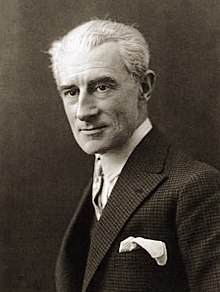
According to Ravel, the work’s musical tribute is not just to Couperin himself but ‘to 18th-century French music in general.’ Indeed, in limbering up for the composition of the work, Ravel transcribed a forlane from François Couperin’s Concerts royaux. Yet for all the inspiration he derived from the music of Couperin and his contemporaries, Ravel was not seeking toemulate the music of that day. He was attracted to the idea of the 18th-century dance suite, and how he might bring his musical imprint to the specific character and tempo of each dance; no menuet of Couperin’s day would sound like this one.
You may be wondering how a tribute to fallen soldiers could contain music which so rarely displays any overt sense of melancholy. In 1925 the French poet and critic André Suarès described this aspect of Ravel’s personality, and offers us another reason for the composer’s fascination with music written 200 years before him: ‘Nothing could be more objective than the art of Ravel, or more deliberately intended to be so. If music is capable of painting an object without first revealing the painter’s feeling towards it, then Ravel’s music achieves this more than any other. We have to go back to the 18th century, to the divertissements of Couperin and Rameau, to encounter a similar inclination.’ Ravel himself put it succinctly: ‘The dead are sad enough, in their eternal silence.’
In 1919, around the time Marguerite Long gave the work’s premiere, Ravel orchestrated it, omitting the Fugue, and the Toccata which concludes the original suite you hear in Gerstein’s Elisabeth Murdoch Hall. The orchestral version is masterly, and as firmly ensconced in the repertoireas the keyboard original, but both versions of Le tombeau de Couperin are miraculous.
Phillip Sametz is the Alumni Coordinator at the Australian National Academy of Music (ANAM) and reviews regularly for Limelight magazine.
Don't miss Kirill Gerstein's Great Performers recital on Monday 3 June 2019. Discover more here.
You might also be interested in
-
-
-
Explore the program notes in advance

